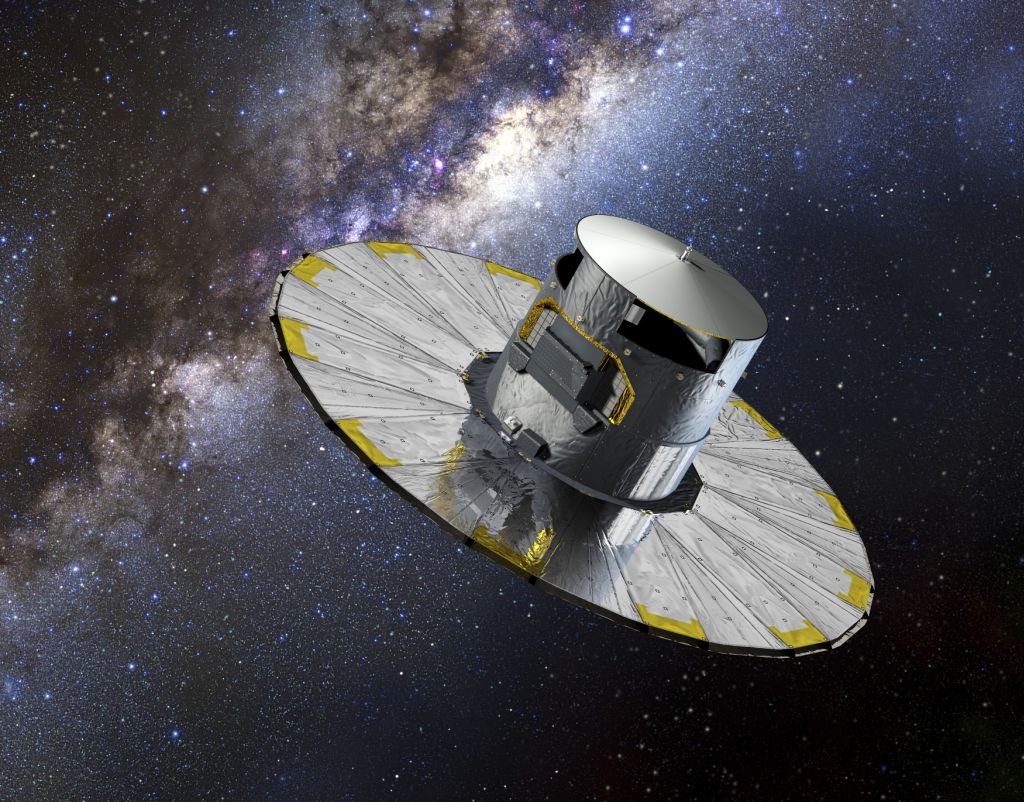
Following the successful conclusion of a very demanding and extensive six-month commissioning period, the European Space Agency’s Gaia space observatory has officially began its five-year primary science mission to map a billion stars in the Milky Way galaxy.
Building on the legacy of the Hipparcos astrometric satellite which catalogued approximately 120,000 stars during the early 1990s, Gaia was developed by ESA as part of the agency’s Horizon 2000 Plus scientific program with the goal of creating the first ever 3-D maps of the positions, distances, and motions of nearly 1 billion stars and other celestial objects in the galaxy in unprecedented detail. This number of stars represents approximately 1 percent of the Milky Way, and the precise measurement of their overall properties promises to revolutionize almost every aspect of astronomical research from stellar and galactic astrophysics to cosmology, exoplanetary research, stellar evolution, and fundamental physics.
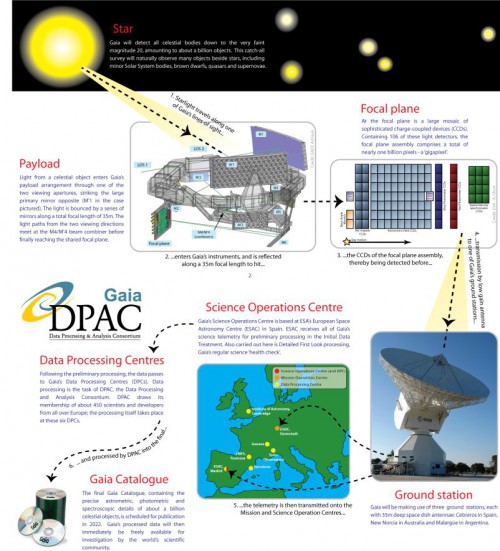
In order to achieve its ambitious mission, Gaia will observe stellar objects along its line of sight, no fewer than 70 times throughout its five-year mission with the help of its two telescopes which will be pointed at different directions in the sky with an angular distance between them of 106.5 degrees. By spinning at a constant rate of 0.016656 degrees per second, while tilted at an angle of 45 degrees relative to the direction of the Sun, Gaia will complete one full revolution every 6 hours and 14 seconds. During this time, the space observatory will sweep the sky four times per day. All incoming light collected by the dual telescope system, after being reflected through a series of mirrors, will be directed toward their common focal plane assembly of the space observatory, which consists of a total of 106 CCDs that have a combined resolution of 938 million pixels, essentially making Gaia the largest digital camera ever to be sent into space. The CCDs on the focal plane are grouped together in such a way as to correspond to each one of the three onboard science instruments that will carry out different science observations simultaneously, according to their specific function. Gaia’s science payload consists of an astrometry instrument, or Astro, for measuring the angular positions and distances of stars, a multi-color photometric instrument, or BP/RP photometer, for measuring their luminosities at wavelengths ranging between 330 and 1050 nm, and a Radial Velocity Spectrometer, or RVS, for measuring their velocities along the line of sight of the space observatory by obtaining their spectra at near-infrared wavelengths between 845 and 872 nm. Gaia’s unparalleled resolution will allow it to observe stars and other celestial objects across the two telescopes’ field of view, down to 20th magnitude (approximately 400,000 times fainter than what can be observed with the naked eye), with a measurement accuracy that will be akin to measuring the width of a human hair from a distance of 2,000 km away. This unparalleled observing capability will allow astronomers to precisely map for the first time a large part of our Milky Way galaxy out to a distance of 30,000 light-years of Earth, while uncovering hundreds of thousands of previously hidden astronomical objects, from small asteroids in our Solar System to dim brown dwarfs and large extrasolar planets in other parts of the galaxy, as well as bright quasars in the most distant regions of the Universe.
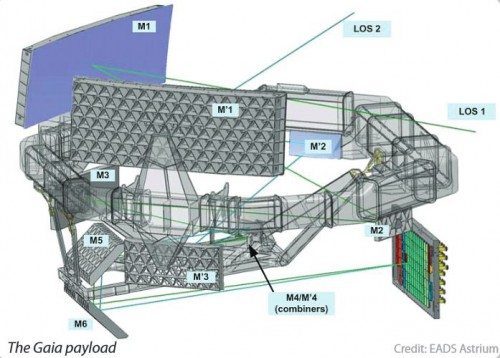
Having been launched in December 2013 onboard a Soyuz rocket from ESA’s Space Centre in Kourou, French Guiana, on Dec. 19, 2013, Gaia was placed into a stable orbit around the Sun-Earth L2 Lagrangian point at a distance of 930,000 miles (1,500,000 km) away from our home planet. Once there, the space observatory entered an extensive test and commissioning period, in order to validate the performance of its entire range of electrical and mechanical subsystems and scientific instruments, as well as the ground support operations of its mission, as described in a previous AmericaSpace article. One of the main tasks of the commissioning phase was the calibration and alignment of Gaia’s twin telescopes so that they could achieve the resolution needed in order for the space observatory to conduct its mission. This task was completed during April, when the mission’s team at ESA’s European Space Operations Centre in Darmstadt, Germany, finished the alignment of the dual telescope optics with the onboard set of 10 secondary mirrors which will be used to reflect and focus incoming starlight toward the space observatory’s focal plane assembly. In particular, by making minute adjustments of the order of 3 mm to the position of one of the secondary mirrors, designated M2, ground teams were able to achieve the optimal image quality that will be necessary for Gaia to begin its primary mission of nominal science operations. Furthermore, following a series of rigorous testing, all 106 CCDs of the focal plane, as well as their supporting computer systems, were found to be working per specifications, with no degradation in their data collection ability. Other commissioning tasks included the successful alignment of Gaia’s spin rate to the CCDs clocking speed, the testing of the onboard micro-propulsion system used for attitude control and for maintaining a constant spin rate throughout the duration of the mission, and the validation of the onboard Sun-pointing phased-array antenna’s ability to achieve its designed data rate of 8.7 Mbps for transmitting the large amounts of Gaia’s science data back to Earth.
In addition to the commissioning of Gaia’s various subsystems, the mission’s team also released in early June a series of science observations that were taken in order to check the performance of the space observatory’s science payload. These included the acquisition of the spectra of various well-studied bright stars with the onboard Radial Velocity Spectrometer and the BP/RP photometer instruments. Comparison of these spectroscopic measurements with similar ground-based observations of the same stars confirmed that Gaia’s science instruments were in an excellent condition and operating according to specifications.
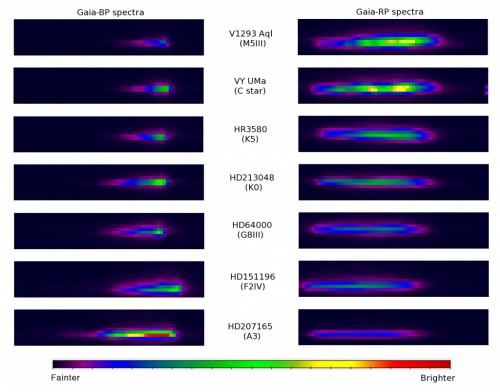
Despite the solid progress of the mission’s commissioning period on preparing Gaia for nominal science operations, a series of issues with a varying degree of severity cropped up along the way, forcing the mission’s team to face some unexpected challenges and to devise alternate observing strategies to mitigate their effects on Gaia’s overall science return. One of these issues, which was observed right from the beginning of the commissioning period, was the discovery of trapped water ice deposits on the telescope mirrors. Even though the presence of some ice on Gaia’s optics was anticipated, the amounts that were discovered were higher than expected, severely limiting the transmission of Gaia’s telescope optics while they were slowly outgassed into space, following the launch of the space observatory. In order to solve the problem, ground teams implemented an extensive “decontamination” campaign to remove the ice by heating the telescope mirrors during a series of three “heating cycles,” before returning them to their normal operational temperatures between -100 and -150 degrees Celsius. While this contamination campaign has for the most part managed to solve the problem, the mission’s team will nevertheless go through at least a couple more during the remainder of 2014, in order to make sure that all remaining water ice layers have been removed from the telescope mirrors.
Furthermore, a more troubling issue involved the discovery of an undesired “stray light” coming from the Sun and from other bright sources in the sky, which was diffracted from the edges of Gaia’s 10-m sunshield toward some parts of the focal plane assembly, resulting in increased levels of diffuse background illumination. Following an initial diagnostic process, ground teams theorized at first that reducing Gaia’s angle of 45 degrees relative to the direction of the Sun down to 42 degrees would help eliminate all excess starlight from the focal plane. Unfortunately, even after this re-orientation was finally implemented, the stray light issue persisted, forcing the mission’s team to readjust Gaia’s observing strategy and optimize the onboard software of its science instruments to account for the permanent presence of the diffuse illumination on the focal plane. Gaia’s science team has calculated that the effects will prove to be minimal during observations of stars brighter than magnitude 15, and only fainter ones up to magnitude 20 near the limit of Gaia’s observing capability will mostly be affected, with the latter probably being measured with a 50 percent decreased accuracy compared to initial expectations. “However, we are optimising the onboard software to mitigate as much as possible the impact caused by these higher background levels of light, and we are confident that we will not be far off our initial and somewhat conservative estimate of studying 150 million stars with RVS, as planned,” says Giuseppe Sarri, ESA’s Gaia Project Manager. “We will still be able to analyse one billion – if not more – stars with the astrometry and photometry instruments, measuring each star’s position and motion up to 100 times more accurately than Gaia’s predecessor Hipparcos and for a far larger number of stars.”
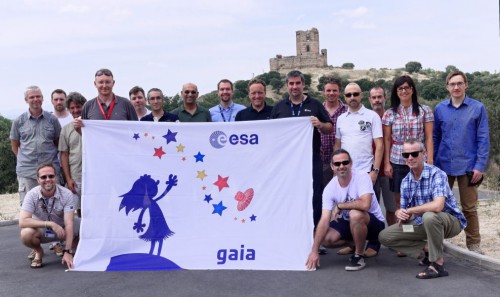
Gaia’s ground-based optical tracking was also revealed to be problematic during the commissioning phase. A network of small to medium ground-based optical telescopes will be used daily to measure Gaia’s exact position on the plane of the sky, providing the space observatory with the necessary accuracy to conduct its science observations. Yet Gaia proved to be much fainter than expected, appearing as a faint 21st-magnitude object instead of the expected 18th magnitude, thus making its optical tracking with the 1-m telescopes of the mission’s ground-tracking network extremely difficult. The issue was fortunately resolved, however, when ground teams switched to bigger telescopes, like the 2.6-m VLT Survey Telescope at ESO’s Paranal Observatory in Chile and the 2-m Liverpool Telescope at the La Palma Observatorio del Roque de Los Muchachos, for precisley measuring Gaia’s position in the sky.
Despite all the challenges faced by the Gaia team throughout this period, the space observatory was nevertheless able to showcase an overall excellent performance, allowing the mission’s in-orbit commissioning review to announce the official end of the commissioning period on July 18, signaling the start of nominal science operations. “The commissioning phase has been challenging, and although some activities are ongoing, all in all Gaia is in good shape to fulfil its promise – all of the core scientific goals are still achievable, as hoped,” says Timo Prusti, ESA’s Project Scientist for Gaia. “Given the somewhat longer-than-expected commissioning and taking into account the time needed to develop some new software, we anticipate that the first intermediate catalogue of science data will be released to scientists and the public in summer 2016. However, if rapidly changing objects such as supernovas are detected, open alerts will be made as soon as possible – a service we hope to have up and running before the end of this year.”
The long-awaited start of Gaia’s primary science mission heralds a new era of high-precision, space-based astrometric observations that will lead to the creation of the first-ever high-definition 3-D map of the overall properties of 1 billion stars in the Milky Way by 2022. “Gaia will be ESA’s discovery machine,” says Dr. Alvaro Giménez, ESA’s Direction of Science and Robotic Exploration. “It will tell us what our home Galaxy is made of and how it was put together in greater detail than ever before, putting Europe at the forefront of precision astronomy.”
The next five years promise to be very exciting indeed.
Video Credit: ESA
Want to keep up-to-date with all things space? Be sure to “Like” AmericaSpace on Facebook and follow us on Twitter: @AmericaSpace
Missions » GAIA »


